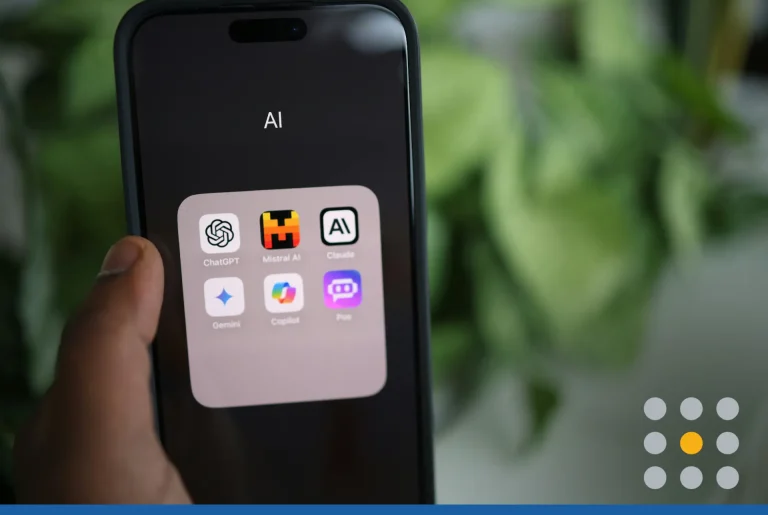Does thinking about social media marketing give you a headache?
Building a loyal online community around your business is a demanding process. And while there are countless ways to get started, taking the first few steps is overwhelming. Every question leads to another question, such as:
- Which social media platforms are right for your business?
- How do you get customers to check out your social media profiles?
- How do you keep an audience engaged once you gain followers?
Here’s one smart choice you can make today — stop working blindly. Plan a strategy that allows you to measure your efforts, instead of just hoping they work. Social media is less puzzling if you study your actions and outcomes. As patterns emerge, you learn to focus your efforts in the right places. Read on for practical tips on using social media for small business.
1. Understand the benefits of each platform
Innovative companies are always finding clever new ways to use social media for small business. But for now, a quick rundown of key channels can help you decide where to begin.
Facebook is a great place to build community through storytelling and advertising. A business page lets you share news and media, answer questions, and connect over customer interests.
Twitter is a fast-paced networking site for sharing brief news, media, and promotions. The micro-message format of a Tweet is an effective hook to drive traffic to business sites.
INSTAGRAM AND SNAPCHAT
On these photo and video-sharing sites, users create visual stories, write captions, and follow trends. Filter tools let you add visual effects to make multimedia messages more animated.
LinkedIn is a business networking and recruiting site for meeting fellow professionals. You can publish articles or host and join groups to discuss relevant topics. LinkedIn is ideal for building a reputation as a topic expert and marketing B2B services.
Pinterest allows users to create and share themed image galleries. You can create vision boards to exchange ideas, promote products, and increase online sales.
2. Use location-based targeting and filtering
As a small business, targeting a local audience is the best use of your resources. People who aren’t interested in your business get annoyed by irrelevant posts and ads. Or worse, they just ignore you because you offer nothing of value to them.
So, how do you reach potential customers in your area? Geotargeting allows you to show ads and content to users based on their location. Let’s say you have a travel agency. You can target customers in your city or county, instead of the entire state.
All the major social media platforms offer filtering and metrics, including Facebook, Twitter, and Instagram. The more filtering options you use, the more you can narrow your audience to find strong leads. Most likely, you have an idea of who your customers are, but real data can tell you more.
Start with known demographics, such as location and income. Then, use metrics to identify secondary audiences you may not be aware of. For example, you might wrongly assume it’s mostly parents interested in your travel packages. A closer look at the data could reveal a big following of empty nesters or young singles.
3. Create incentives for geotagging
Social proof is a valuable currency for small businesses. Consumers look to people they trust for recommendations. As a result, geotagging gives you instant advertising and clout. The path to a purchase is often short when customers are looking for local businesses. Seeing a glowing review with a location tag gives customers a reason to act in the near future.
The best way to get results is to ask for what you want. Give customers motivation to tag your location when they make a purchase. People carry smartphones everywhere they go, making it easy to snap a photo on the spot.
Consider offering a discount on a customer’s next purchase for posting a Facebook or Instagram photo with a geotag. If a customer has hundreds of friends, imagine how many people see these photos in their feed. You can even offer a “thank you” discount to customers who tag you several times a month or get a lot of likes on a tagged post.
4. Track the success of social media posts
Twitter, Facebook, and Instagram have great metrics for tracking impressions and engagement. It’s up to you to decide which measurements are important before you begin a campaign. A high number of impressions doesn’t matter if none of those clicks turn into conversions.
Try to pinpoint forms of engagement that lead to conversions. For example, local customers who like a geotagged post may be more likely to visit you. Figure out what drives your customers, and refine your posts to motivate these actions again and again.
5. Study the anatomy of a great post
Don’t follow a thousand brands online just for the sake of it. Successful campaigns should serve as a guideline for your content. Marketing is a science, and people who learn to follow strong formulas consistently gain influence. Learn to ask productive questions, such as:
- Are my customers more engaged by reading or visuals?
- Do my headlines or messages have a call to action?
- Does my copy get straight to the point?
- Do all the elements of my posts focus on a single call to action?
- Do I create and share content that’s relevant to my target audience?
With these thoughts in mind, pay attention to posts that attract a lot of attention. Study how brands in your industry use short, snappy copy that goes straight to the heart of a problem or question. Think about the engaging aspects that make a photo or video hard to ignore. Then test similar posts, making small changes to copy, colors, or photos. Some formats perform better than others, and testing is the only way to know if you’re getting the highest conversions possible.
6. Throw your expertise in the ring
If you want your expertise to reach a lot of people, get involved in popular forums and Q&A sites. Quora and LinkedIn groups are great places to answer questions and build up views over time. Both sites make it easy for readers to follow a link to your bio or career history. When you provide useful information on these sites, customers automatically see you as an authority.
Pay attention to the recommended questions listed on each page. You can increase your web presence by adding your two cents on clusters of relevant pages. You may even get quoted in a blog, article, or Tweet from time to time.
7. Scan user comments for topic ideas
Don’t know which topic ideas to concentrate on? Start paying more attention to what people are saying on your social media pages. Whether you realize it or not, followers provide many relevant topics ideas in their comments. Commenters ask questions or mention topics they want you to expand upon.
Set aside a few days a month for a deep dive into the comments sections on your blog, YouTube videos, and social media posts. You can go a step further, and host monthly or weekly polls to let users choose their favorite topics. In either case, you’re putting your time toward content that is guaranteed to be well received.
8. Plan out content series
Learning to repurpose material can help you publish content more frequently. When the bulk of your social media efforts happen in-house, it’s often difficult to spare the time. Once you research strong topics, create a plan to repurpose it for several platforms.
Let’s say you write a blog post about choosing a business name. You can transform the core steps into an infographic. Turn those images into a short video for Facebook or Instagram. Then, plan a series of numbered Tweets showcasing mistakes to avoid when choosing a name. You can even create image quotes for Pinterest or write a longer e-book with more in-depth information. And of course, you can send out an email newsletter keeping subscribers up to date with all this exciting content.
The possibilities are endless. But more importantly, you can put out content on all your key platforms without spreading yourself too thin.
9. Make a memorable statement
Just being present on social media doesn’t make an impact. You need a clear vision combined with insight into customer needs. While you can learn from big brands, aim to highlight what’s special about your small business. Customers who “shop small” expect personality that’s hard for big brands to achieve.
And don’t let your core goals get away from you. Make sure every post and interaction have a function and a positive outcome. A strong social media strategy is purpose-driven. It ties together many touchpoints to provide a consistent experience, no matter where customers engage with your brand.
Social media is just one of many ways to communicate with customers. Tie them all together with our guide to creating a strategic marketing plan.







